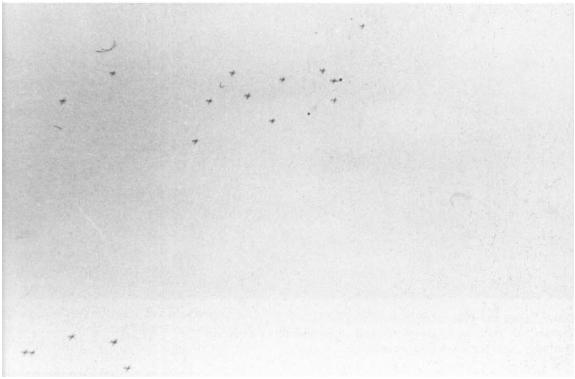
SMASHING T H R O U G H THE CRUST

There was wide-ranging comment among the German troops aboutoverflying bomber and transport aircraft. It made them feel uneasy.Allied reinforcements as seen from the German front line.
(Bundesarchiv)
The Fallschirmjäger had struck the rear ofthe leading squadron of the Irish Guardsgroup and the head of the second one.There was an instantaneous and devastatingresponse. Tank machine guns sprayed theedges of woods and ditches with fire.Typhoon fighter-bomber aircraft weredirected on to identified targets.Even so, German survivors from the tankambush turned up later at Kerutt's head-quarters escorting the British tank crewswhich had baled out. Lieutenant Schulz'scompany, relocated when the air activitystarted, ambushed more British tanksfurther down the road. Eight tanks and twoarmoured cars were now fiercely-burningwrecks. Enemy progress was monitored,
with columns reported reaching the areajust south of Valkenswaard. Although abreakthrough had been achieved, Volzrecalls 'the situation was gloomy but not yethopeless'. Skirmishing continued through-out the night, with forays mounted by smallgroups of Fallschirmjäger harassing col-umns lined up on the road to Valkenswaard.Flashes followed by detonations, shouts andheavy automatic fire punctuated the night,with an eerie glow here and there indicatingsuccess.A few kilometres away, Lieutenant-Colonel von der Heydte, commandingFallschirmjäger Regiment 6, was seething.His unit was holding the western wing ofthe curve in the Neerpelt salient. He had
81